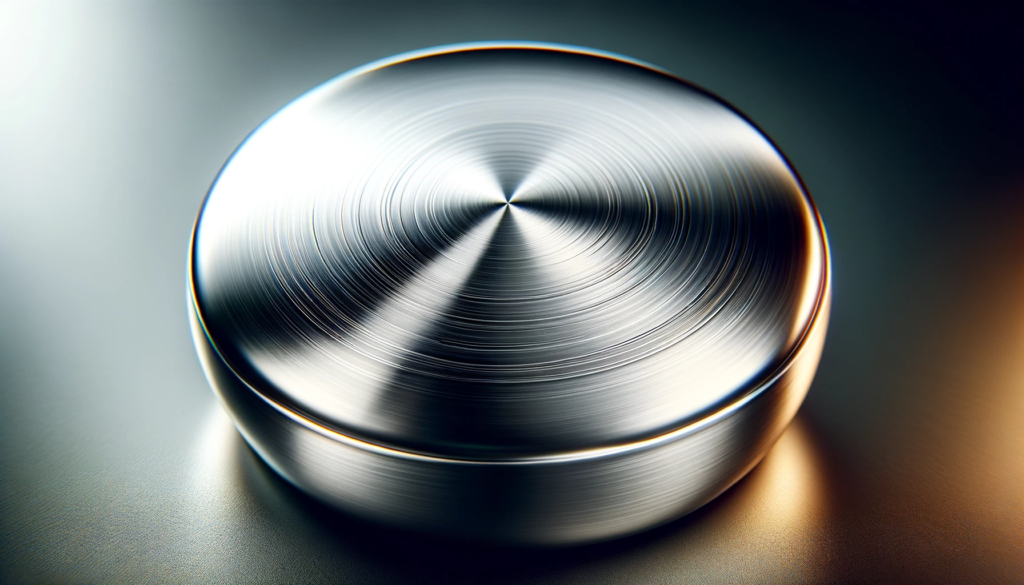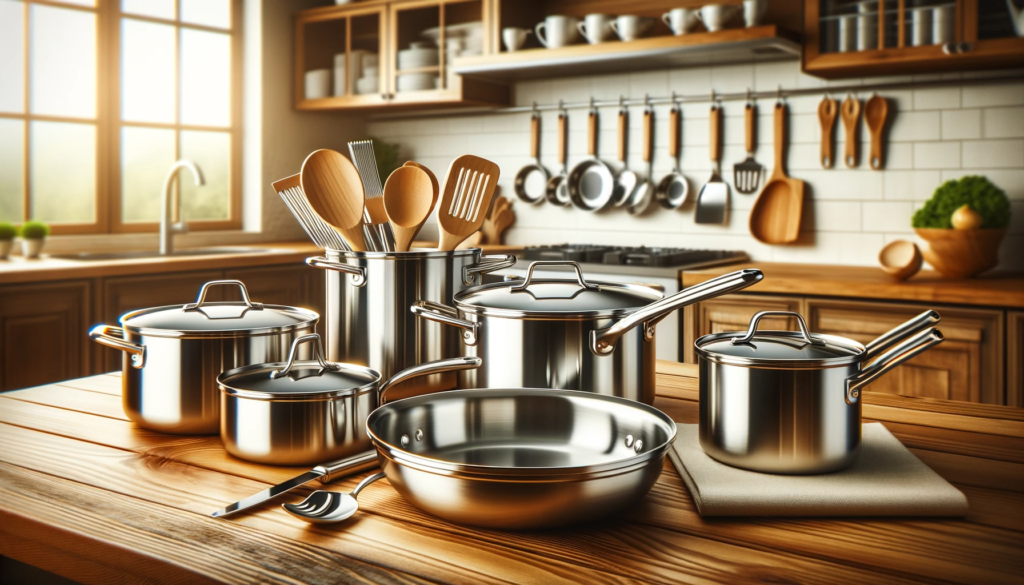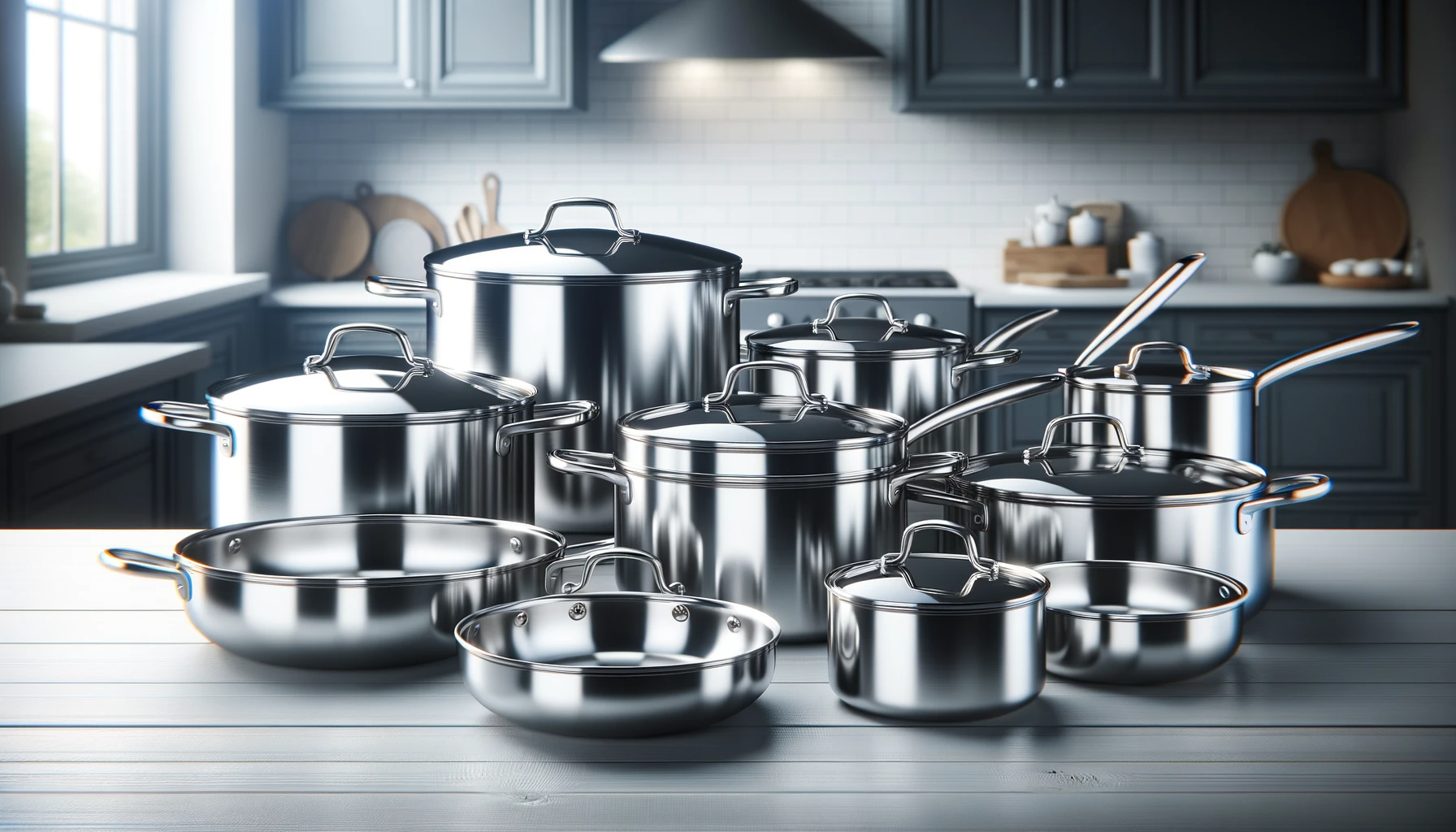Have you ever wondered if that nonstick pan is secretly exposing your family to risky chemicals?
With stainless steel cookware, the answer is reassuring.
Let’s dive into the details on stainless steel’s PFOA safety compared to traditional nonstick pans.
Is Stainless Steel Cookware PFOA Free?

Yes, plain stainless steel cookware that has no nonstick coating applied should be reliably free of PFOA.
The slick surface of stainless steel pans comes from polishing the natural steel itself without any added chemical finishes.
Of course, we’ll explore the details more below.
But in short – quality bare stainless steel pots and pans avoid any extra coatings that could contain PFOA.
What is PFOA?

Perfluorooctanoic acid, also known as PFOA, is a manmade chemical that has been commonly used to make nonstick coatings for cookware over the past several decades.
Specifically, PFOA helps provide a slick, nonstick surface that prevents foods from sticking to pans and makes cooking and cleaning easier.
However, there have been growing concerns about potential health risks that may be associated with exposure to PFOA.
Studies have suggested links between PFOA exposure and effects on fertility, developmental impacts in fetuses and children, increased cholesterol levels, and increased risks of thyroid disease, testicular cancer, kidney cancer, and other conditions.
PFOA does not chemically bind to the nonstick surface, which means it can leach out of the cookware coating and into food during the cooking process.
This is especially true when pans are exposed to high heat.
As PFOA leaches out of cookware coatings over time, people can ingest it by eating food that has been prepared in coated pans containing PFOA.
So while PFOA provides useful nonstick properties, its potential health effects have raised valid concerns, especially with regards to its use in cookware coatings that come into direct contact with food.
Is Stainless Steel Naturally PFOA Free?

Stainless steel itself is a metal alloy containing primarily iron, chromium, nickel, manganese, and carbon.
It does not contain fluoropolymers or the chemical PFOA.
So plain stainless steel cookware that does not have any kind of nonstick coating should be PFOA free in its raw material composition.
Stainless steel is also considered very safe for food contact when used as cookware.
The slick, shiny surface of stainless steel pans is from polishing and brushing the natural steel, not a added nonstick coating.
So well-made stainless steel cookware should provide an smooth cooking surface without the addition of any PFOA containing substances.
Quality stainless steel pans utilize the properties inherent in the metal itself to resist food sticking without artificial coatings.
This means high quality plain stainless steel pots, pans, and other cookware should reliably be free of PFOA out of the box.
Consumers do not need to worry about potential leaching of this chemical during cooking when using bare stainless steel cookware that has no nonstick finish added.
Beware of Nonstick Stainless Steel

While bare stainless steel contains no PFOA, some stainless steel cookware does come with additional nonstick finishes applied.
These added coatings can improve nonstick performance beyond what the steel itself provides.
However, nonstick finishes may contain PFOA or similar perflourinated compounds.
Manufacturers apply various types of patented nonstick finishes to stainless steel cookware, often giving them trademarked brand names.
These may include ceramic-based coatings, titanium finishes, or other proprietary formulas.
While many newer coatings are advertised as PFOA free, some still rely on this chemical or similar perflourinated compounds to achieve desired nonstick properties.
So consumers need to read labels and product descriptions carefully to determine if a particular piece of stainless steel cookware contains any kind of added nonstick finish.
If the cookware has a slick coating advertised, it likely contains substances intended to improve nonstick function beyond the natural properties of stainless steel.
These artificial coatings could potentially include PFOA or reactive precursors that break down into PFOA.
Plain stainless steel with no added finishes is reliably PFOA free.
But “nonstick stainless steel” may still pose PFOA exposure risks depending on the exact materials used in the added coating.
Check specifications carefully before purchasing stainless steel cookware that claims any kind of nonstick benefit.
Contact manufacturers directly if required details about chemical compositions of added coatings are not provided.
How Manufacturers Are Reducing PFOA

Growing health and environmental concerns about PFOA over the past decade have pushed many major cookware brands to reduce or eliminate reliance on this chemical.
Pressure from consumer advocacy groups and stricter government regulations have also encouraged the industry to find alternative substances for nonstick coatings.
Most leading cookware manufacturers have phased out PFOA and similar perflourinated chemicals in their products, or plan to do so in the next few years.
Instead, many brands now use ceramics, silicone polymers, anodized aluminum, or other greener coating options to achieve nonstick functionality.
While small traces of PFOA may still be found even in these newer finishes, levels are often dramatically reduced compared to a decade ago.
Continued innovation means next-generation nonstick coatings can provide needed food release and easy cleaning benefits without relying on PFOA or other perflourinated compounds linked to health issues.
Consumers still need to read labels and check with manufacturers about exact chemical compositions used in nonstick coatings.
But fortunately for buyers, most options today avoid problematic PFOA while still delivering nonstick performance.
So while PFOA finds more limited use in modern nonstick finishes, plain stainless steel cookware remains the most reliably PFOA free option on the market.
Bare stainless steel gets its natural stick resistance from the properties of the metal itself, avoiding any need for added chemical coatings in the first place.
How to Choose PFOA Free Pans

Consumers looking minimize PFOA exposure from their cookware have excellent options on today’s market.
Follow these tips when buying new pots and pans:
Look for plain stainless steel cookware with no nonstick coatings or finishes advertised.
Quality stainless steel alone provides stick resistance without chemicals.
Avoid any pans described as “nonstick stainless steel” or advertised with added ceramic, titanium, or other slick finishes.
These likely contain PFAS compounds added to improve food release.
If buying nonstick cookware, carefully check product descriptions and labeling for PFOA content.
Most major brands today have phased out PFOA, but some pans still rely on this chemical.
Seek out credibly certified PFOA free models, or contact manufacturers for chemical details if unclear.
Consider alternative nonstick finishes like ceramic, anodized aluminum, or durable enameled coatings.
While no finish is completely inert, these options don’t rely on PFAS compounds for nonstick properties.
Be prepared to pay more for PFOA free nonstick pans from reputable makers.
Avoid cheap cookware labeled simply “nonstick” with no further details on construction or coatings used.
Quality PFOA free models cost more but are worthwhile for health.
Properly caring for nonstick pans also reduces chemical leaching.
Avoid overheating empty pans, metal utensils that can scratch finishes, and abrasive scouring that wears away coatings over time.
Gentle, low-heat cooking extends PFOA free pan life.
Conclusion
Plain stainless steel cookware without any nonstick coatings should reliably be free of PFOA and other perflourinated chemicals.
However, some products labeled “stainless steel” do come with additional nonstick finishes that could contain PFOA or similar compounds.
Carefully read labels and descriptions on stainless steel pans and pots to ensure no slip additives have been applied.
Contact manufacturers for chemical details if unsure about PFOA content.
While most brands of nonstick cookware have phased out PFOA, traces may remain in some products.
Seek out credibly certified PFOA free models if buying nonstick pans, understanding these are typically more expensive than generic options.
Continued innovation means high-quality PFOA free nonstick finishes are widely available.
But for completely guaranteed PFOA avoidance, stick to quality plain stainless steel cookware with no added coatings.



